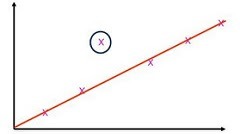There are no items in your cart
Add More
Add More
| Item Details | Price | ||
|---|---|---|---|
These are values in a set of results which are judged not to be part of the variation caused by random uncertainty. Anomalies are also often called outliers, they are odd values that don't fit the pattern shown by other results. This might be caused when a controlled variable has not been controlled properly. You could have allowed the temperature to change when it was only concentration that should be varied. It could also occur when a piece of equipment is used in the wrong way, like holding the ruler upside down or failing to zero a set of scales.
Anomalies are dealt with by noting them in your results and then excluding them from your calculations (such as the mean). A good way to note anomalies is to place a ring around them, Eg if you recorded the following values for weight, 2.3g 2.2g, 3.1g, 2.4g, 2.2g then you could exclude 3.1g as this does not fit the pattern shown in the other results. The mean would then be calculated as 2.3+2.3+2.4+2.2 / 4 = 2.3g.If you need to evaluate results with an anomaly try to be specific about the possible causes. State things like as 'the result at 27.5 deg C is lower than expected so the temperature might have dropped when the reading was taken'. You need to show you are able to apply scientific knowledge to find possible causes for the anomaly - in the previous example you would be showing you aware that reaction rates are slower at lower temperatures.
